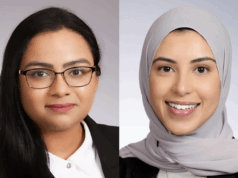
By Andrei V Alexandrov
Major advancements in stroke treatment occurred this year: the standard of care has changed and we are now faced with the challenge to modify the chain of survival of stroke patients. Stroke patients have to reach comprehensive stroke centres (CSC) particularly if they are suspect to have an acute large vessel occlusion. This commentary presents the top 10 reasons why comprehensive stroke centres should become patient destination.
10 First effective treatment for stroke: admission to a multidisciplinary stroke unit.
Specialised neuro-rehabilitation and organisation of stroke care beyond general medicine wards were first reported to improve outcomes after stroke. A multidisciplinary stroke unit and integration with neuro-rehabilitation are the requirements of comprehensive stroke centre accreditation by the Joint Commission, whereas the simple designation of stroke unit “beds” in primary stroke centres (PSC) does not impart any known benefit.
9 All stroke and transient ischaemic attack (TIA) patients need to see vascular neurologists
Primary stroke centres may not necessarily have vascular neurologists on staff to deliver frontline stroke therapy such as intravenous tissue plasminogen activator (t-PA). Beyond that, all stroke patients should receive adequate workup that requires vascular neurology expertise to determine pathogenic mechanism of stroke. This requires specialised testing that may not be available at the primary stroke centre level.
8 Multimodal imaging
Sending a patient with resolved neurological deficit (transient ischaemic attack) home after only a non-contrast CT scan is common and completely inadequate. Stroke and TIA patients should have access to multimodal computed tomography (CT/CTA) and magnetic resonance (MRI/MRA) imaging including vascular imaging. In addition, ultrasound tests such as carotid duplex, transcranial Doppler and echocardiography are a must. The diagnosis of stroke vs. TIA is tissue-imaging based and abovementioned tests are necessary to determine pathogenic mechanism of these events. The mechanism in turn determines the choice of early and aggressive secondary stroke prevention strategy.
7 Never on diversion
Stroke patients require access to these imaging modalities 24×7 since deterioration after improvement, stroke progression or early recurrence are very common. Comprehensive stroke centres are required to provide services 24×7 and never go on diversion since they are the last line of defense. The buck stops here!
6 24×7 neuro-critical care on site
Perhaps no other recent subspecialty in neurology better exemplifies the distinction between primary and comprehensive stroke centre level as neuro-critical care. Physicians used to sign off critically ill stroke patients too early, and management of malignant middle cerebral artery syndrome, severe vertebra-basilar strokes and intracerebral haemorrhages is extremely challenging requiring access to neuro-intensive care unit (NICU). In addition, patients with subarachnoid haemorrhages and other neurosurgical pathologies have to be brought to the comprehensive stroke centres.
5 24×7 care by neurosurgery on site
Comprehensive stroke centres are required by the Joint Commission to have neurosurgeons 24×7 on site. It is impossible to underscore access to life-saving procedures and specialised treatment of certain types of strokes that can only be provided by neurosurgical teams.
4 Clinical trials
Advancements in medicine are impossible without clinical trials, and comprehensive stroke centres are required to participate in research. Offering cutting edge technologies and expanding possibilities for treatment are necessary to meet the needs of patients since the majority of stroke victims arrive beyond the time windows for reperfusion therapies.
3 Treatment beyond standard of care windows
The hallmark of comprehensive stroke centres is to have all options available for stroke patients who are often requiring treatment strategies beyond the conventional time windows. Protocols for management of these patients should include those with unknown time of onset, fluctuating deficits and arterial lesions posing challenges to conventional approaches.
2 Direct access = reduced onset to Rx time
We have learned that the faster we treat stroke patients the better the result. Therefore, if given a choice to stop at a “stroke ready” hospital or PSC or to go to CSC, one should weigh in the need to have access to all treatment options, not just systemic t-PA. It may seem counter-intuitive, but adding an extra 30 minutes’ drive to a CSC may result in faster t-PA administration by an on-site vascular neurology team (cutting edge teams are now giving t-PA in less than 30 minutes from arrival), faster determination of acute arterial occlusion, persisting occlusion or reocclusion despite systemic t-PA treatment, and faster door-to-arterial puncture times. Ironically, even if driving times to a “stroke ready” or PSC hospital are shorter, most of these facilities are incapable of turning around/transferring out cases to a CSC within an hour of arrival. This is further complicated by inability to provide state of the science stroke care at “stroke ready” and PSC levels. Problems with hospital transfer, bed control, arranging ambulance or helicopter transport, and obtaining all required administrative and patient/family permissions significantly challenge turnaround times to CSCs from lesser-prepared facilities. Until systems are capable of demonstrating rapid turnarounds, these cases’ direct admission to the CSC is imperative.
1 Thrombectomy works!
Several recent randomised clinical trials (MR CLEAN, ESCAPE, EXTEND-IA and SWIFT PRIME) showed that patients with acute emergent large vessel occlusions receiving best medical therapy (such as systemic t-PA) further benefit from endovascular thrombectomy with novel devices such as stentrievers. It is an exciting time in stroke care with better treatment options for patients with the most severe strokes and we now need to re-organise patient access to these procedures that are currently available mostly (and in many areas only) at comprehensive stroke centres. The challenge for the future is to prevent non-use of systemic t-PA in an era of catheter supported stroke care. We have now shown that t-PA and catheter-based care have a symbiotic relationship; we need to ensure that facilities continue to support reperfusion through delivery of systemic t-PA, especially when catheter-based care is not immediately available, and facilitate direct admission to or rapid transfer to a CSC.
Andrei V Alexandrov is Semmes-Murphey professor and chairman of the Department of Neurology at the University of Tennessee Health Science Center, Memphis, USA












